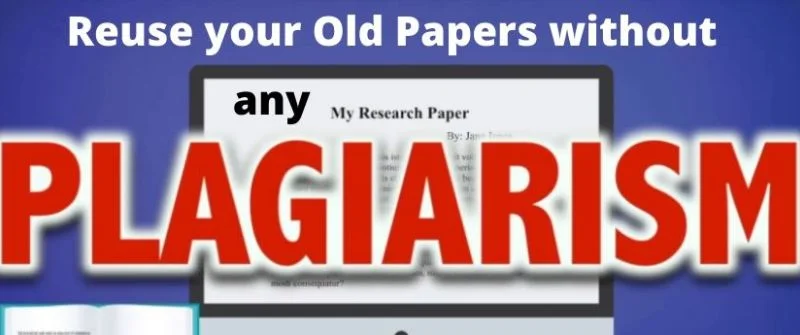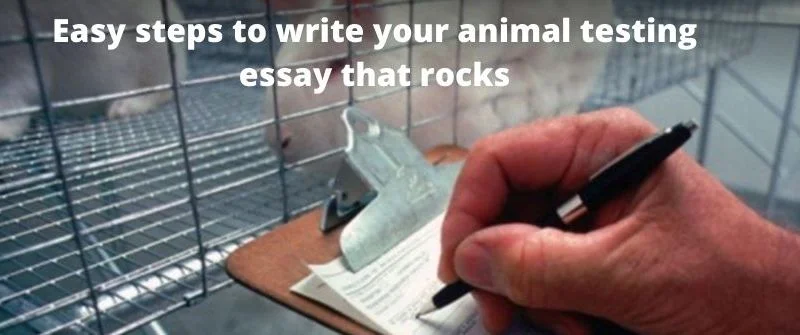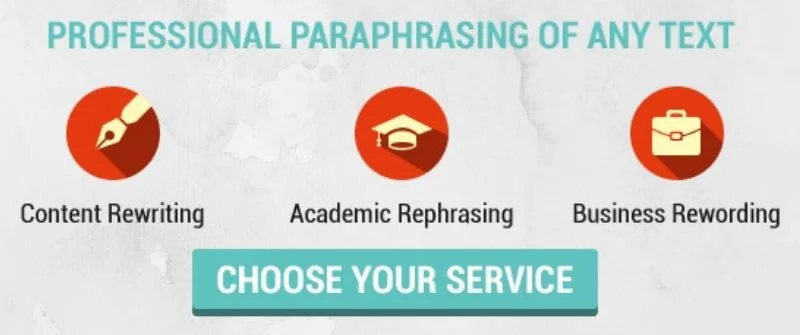Hook Techniques for Various Essay Genres: 15 Compelling Hook Examples
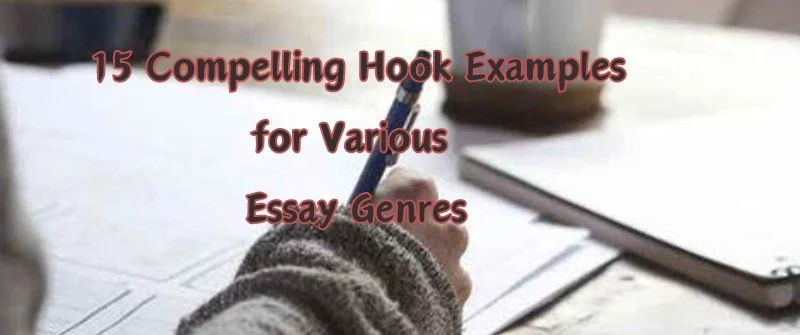
A hook can be regarded as the opening sentence or sentences of an essay meant to capture the attention of readers.
Hooks are very important if you wish to engage your audience and draw them into your writing. The kind of hook used depends on your essay’s purpose and genre.
This is the reason why it is crucial to understand hook techniques and how to apply them in various essay genres.
Hook Techniques for Various Essay Genres
Now, let us explore in detail hook techniques for narrative, persuasive, and descriptive essay genres. Examples will be provided to help you better understand the techniques.
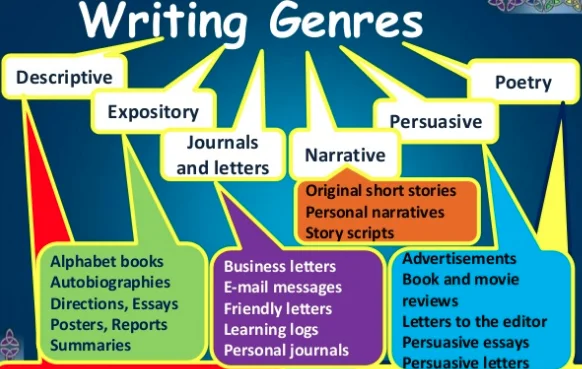
A. Narrative Essays
Creating a Storytelling Hook
When writing a narrative essay, you are telling your audience (narrating) about something or a story. The story can even come from personal experience or somebody else’s experience.
The hook should be interesting enough to capture the reader’s attention.
Using Anecdotes and Personal Experiences
In narrative essays, anecdotes and personal experiences are a nice way of creating a hook. Anecdotes, in this case, are brief and personal stories that relate to the essay’s topic.
The use of anecdotal personal experiences will help the readers relate to your narrative. It helps the readers relate more to your story because they might have experienced it directly or indirectly.
Hook Examples for Narrative Essays
Example of a Travel Narrative:
“As the plane touched down on foreign soil, my heart raced with excitement and trepidation. Little did I know that the next 48 hours would unfold a tale of unexpected friendships, cultural revelations, and the kind of adventure that changes you forever”.
Example of a Childhood Memory Narrative:
“In the attic of my grandparents’ house, dusty boxes held more than forgotten trinkets; they held the key to a time when scraped knees were badges of honor, and summer afternoons unfolded in a kaleidoscope of laughter. One box, in particular, held the worn-out teddy bear that witnessed my earliest secrets”.
Example of Overcoming a Challenge Narrative:
“The beep of the heart monitor echoed through the sterile hospital room, marking the rhythm of a battle I never anticipated. Little did I know that facing the abyss of illness would teach me not just the art of survival, but the profound strength hidden within the human spirit”.
Example of a Life-changing Event Narrative:
“The rain poured down in sheets as I stood in the wreckage of what was once my home. In that moment of loss, I discovered an unexpected reservoir of resilience. The storm outside mirrored the tempest within, and from the ruins emerged a story of rebuilding, both in bricks and in the fragments of a shattered heart”.
Example of a Friendship Narrative:
“It started with a shared glance across a crowded room and grew into a bond that weathered storms of laughter, tears, and the unpredictability of life. Our friendship, like a well-worn novel, is filled with chapters of adventures, misadventures, and the kind of camaraderie that makes ordinary moments extraordinary”.
B. Persuasive Essays
Implementing Strong Statements or Facts
As the name suggests, this type of essay is meant to persuade your readers to believe or agree with your arguments or point of view.
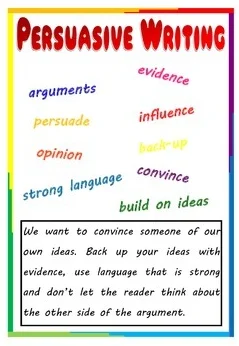
As such, you must write the essay in such a way that it appeals to their logic, emotions, or ethics. One way of instantly appealing to such readers is to use strong statements or facts as a hook.
Strong statements or facts can be a quote from an influential or authoritative figure that supports your thesis.
Engaging with Rhetorical Questions
It is also important to engage with rhetorical questions to effectively capture the attention of the readers and persuade them.
Rhetorical questions have to be guided by the thesis of the essay together with the perspective you want your readers to consider while reading your essay.
Below are five examples of persuasive essays’ hooks.
Hook Examples for Persuasive Essays
Example with a Strong Statement:
“In a world inundated with information, the alarming truth remains crystal clear: our planet is teetering on the brink of environmental catastrophe, and the time for decisive action is now. Ignorance may be bliss, but it won’t save our deteriorating ecosystems”.
Example with a Persuasive Fact:
“Did you know that, as of today, over 8 million tons of plastic find their way into the oceans every year? This staggering fact should serve as a wake-up call, urging us to reevaluate our disposable habits and rethink the impact of convenience on our planet’s future”.
Example with a Strong Statement on Social Issues:
“In a society where equality is often preached but seldom practiced, it is imperative to confront the uncomfortable truth: systemic racism persists, entrenched in the very foundations of our institutions. To turn a blind eye is to be complicit in the perpetuation of injustice”.
Example with a Persuasive Fact on Health:
“Consider this: the average American consumes approximately 17 teaspoons of added sugar each day, fueling an epidemic of obesity and chronic illnesses. The sweet lies of the food industry have dire consequences on our well-being, and it’s time we take back control of our health”.
Example with a Rhetorical Question:
“What if the cure for cancer is hidden within the unexplored realms of scientific research, waiting for funding that never arrives? By investing in scientific endeavors, we not only fund hope but potentially save countless lives. Are we ready to be the generation that makes that choice?”
C. Descriptive Essays
Sensory Hooks: Painting Vivid Imagery
One way of creating an effective hook for a descriptive essay is to use sensory hooks that paint vivid imagery to the reader.
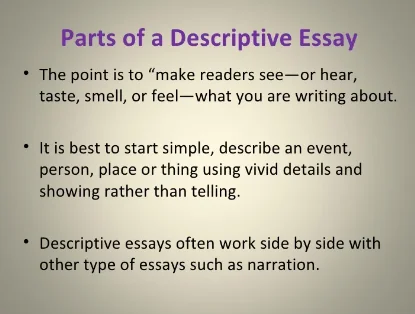
Remember, the main aim when writing a descriptive essay is to describe something to your reader as clearly as possible. As you describe, ensure that they understand by making them imagine.
Using Descriptive Language to Captivate
Another good strategy is to use descriptive language to capture the attention of your readers. Descriptive language helps paint a clear image of what you are trying to describe.
Below are five examples.
Hook Examples for Descriptive Essays
Example of a Nature Description:
“As the first light of dawn crept over the horizon, the meadow awoke in a symphony of colors and sounds. The dew-kissed grass, still drowsy from the night, whispered beneath my fingertips, and the air carried the sweet perfume of wildflowers, blending seamlessly with the distant murmur of a babbling brook”.
Example of an Urban Setting Description:
“The cityscape unfolded beneath my feet like a luminous tapestry of concrete and glass. Neon signs flickered to life, casting a kaleidoscope of hues on the bustling streets below. The rhythmic hum of traffic became a steady heartbeat, pulsating through the veins of the metropolis”.
Example of a Culinary Description:
“In the kitchen, the sizzle of garlic meeting hot olive oil orchestrated a savory overture, while the melody of simmering spices and bubbling sauces promised an imminent feast. The aroma, an intoxicating dance of flavors, wrapped around me like a comforting embrace”.
Example of a Historical Setting Description:
“The ancient stone walls, weathered by centuries of whispers and echoes, stood as silent witnesses to the passage of time. As I traced my fingers along the engraved runes, I could almost feel the weight of history settling in the air, weaving stories of triumphs and tribulations”.
Example of an Atmospheric Description:
“The storm clouds gathered on the horizon, a brooding army painted in shades of gray. The first raindrops, like hesitant dancers, tapped on my window, gradually building into a crescendo that drummed a soothing lullaby against the roof”.
In a nutshell, the 15 hooks are good examples that can give you an idea of creating your own. Good luck!

Josh Jasen or JJ as we fondly call him, is a senior academic editor at Grade Bees in charge of the writing department. When not managing complex essays and academic writing tasks, Josh is busy advising students on how to pass assignments. In his spare time, he loves playing football or walking with his dog around the park.


